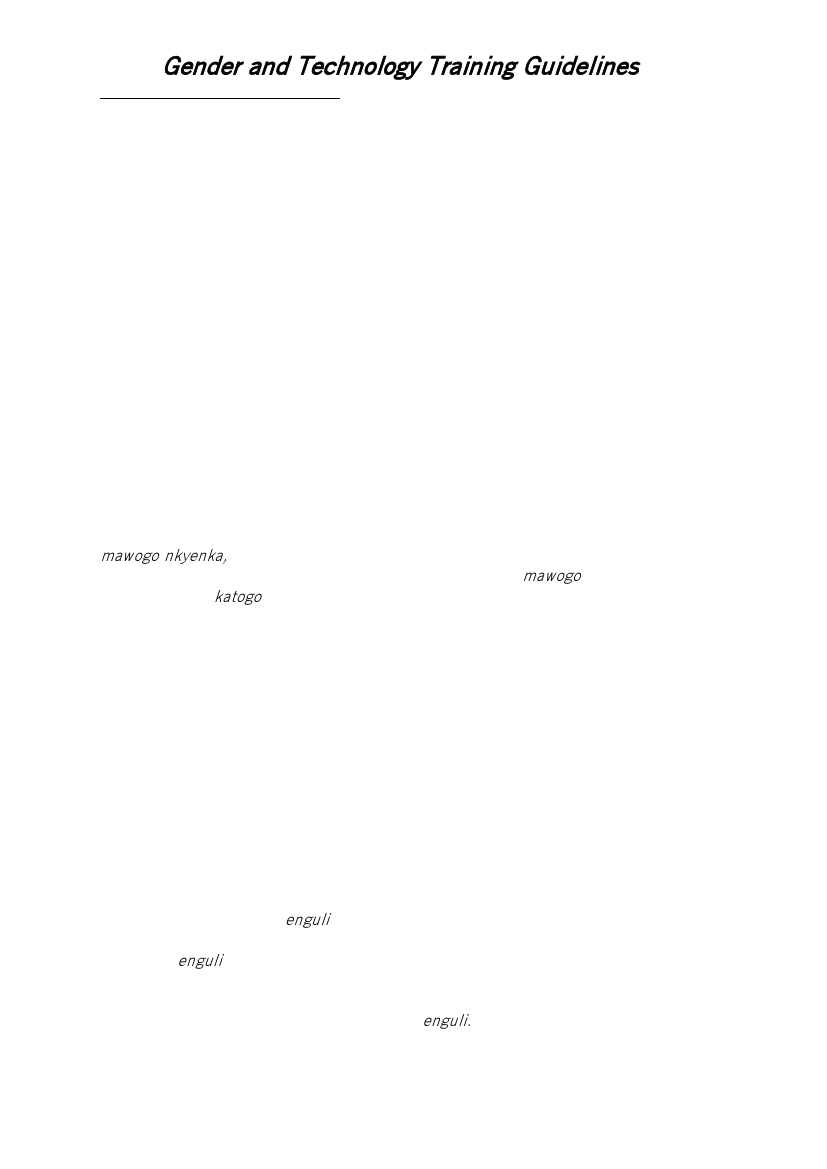
Gender and Technology Training Guidelines
3. Cassava processing in Uganda
In the mid 1980s, after years of civil war, most of the crops in the country were
wiped out. Widows and orphans who returned to their villages found that the only crop
available was the not so popular Cassava plant. But women have since developed
ways of using every bit of this plant for a whole range of needs.
Certain properties of Cassava such as its tolerance to drought, poor soil and neglect,
and the fact that it can be stored underground for several months after maturation
make it an important food source, particularly in times of food shortage.
Ugandan women use the whole Cassava plant not only as a food crop, but also for
firewood, cooking oil, medicine and building material, and as a source of cash
income.
Cassava roots normally cannot be stored for more than a few days after digging. They
are usually dug up, peeled and then cooked, mostly with beans or meat, and eaten
immediately. For long term preservation women usually slice and dry the Cassava into
tablets. Women use the processed Cassava for home consumption particularly during
the dry season when fresh food is not readily available or too expensive to buy.
The dried Cassava tablets do not last longer than 4 months after which they will
require further drying. In order to solve this problem women have recently developed
mawogo nkyenka, cassava pellets, which keep for longer periods if packed and can be
used throughout the year. The simplest meal made out of mawogo mixed with cooked
beans is called katogo. To make this the mixture is boiled until it is quite tender.
Cow's ghee can be added to improve the taste. Village women resort to this meal
periodically because it saves firewood and does not require any other sauce.
The production of these dried Cassava pellets is limited, however, due to poor grating
facilities. There is room for improvement of the grating technology for increased
production and also for upgrading the techniques for even longer preservation of
Cassava food products.
Women use pure Cassava flour made from the sweet variety as a much cheaper and
more available alternative to wheat flour, to prepare cakes and cookies, and to
develop other new products for the market. Some women, either individually or in co-
operatives, bake cakes for parties, or biscuits, which can be packed and stored for
long term use.
Women have also adapted their traditional brewing technology for the production of
the local alcoholic drink, enguli from Cassava. Women sell the
processed enguli to breweries that further process it to a more refined drink, Uganda
gin. It is also sold at the local markets or large-scale distilleries.
The women also make of the by-products of enguli. The residue that remains after the
initial squeezing and filtration of the Cassava is the main source of animal feed in the
67